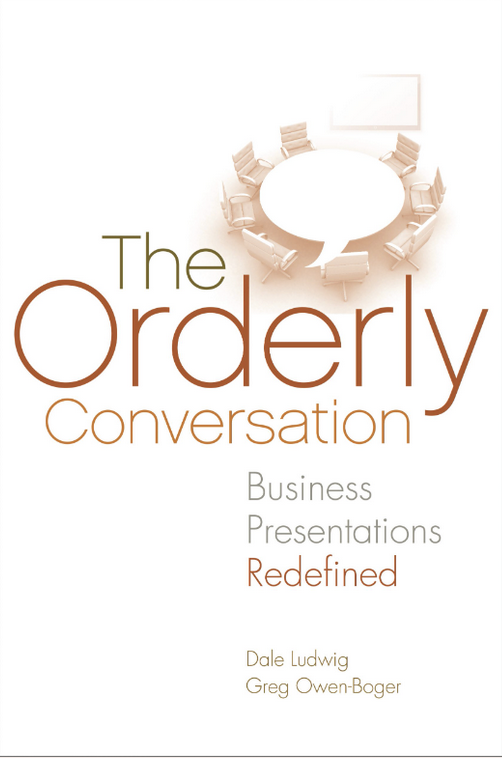
- Dale Ludwig Leadership
Intentionality is One of the Fifteen Facets of Executive Presence
This article is one in a series focusing on Executive Presence and how leaders can meet their potential through improved communication. Executive Presence is defined by Suzanne Bates in her book “All the Leader You Can Be: The Science of Achieving Extraordinary Executive Presence” as “The qualities of a leader that engage, inspire, align, and move people to act… By understanding how your intentions as a leader match up with perceptions, you can learn how to flex your style to gain trust, build alignment, lead change, inspire performance, and drive executional excellence.”
This article focuses on Intentionality, one of the 15 facets that make up a 3-dimensional leader.
Click here to gain a greater understanding of (a) executive presence in general and (b) the other facets that make up a well-rounded leader.
What is Intentionality?
Bates says someone who has a strength in Intentionality, one of the fifteen facets of executive presence, is good at “clarifying direction and keeping actions aligned and on track, all without stifling dissent or neglecting needs to adjust course.” Intentionality is about having a plan, appearing focused, and being in control while also being able to zig and zag with purpose.
Intentionality is the opposite of being “a natural” at something. Being a natural at something is great, but it only gets you so far. At some point, leaders need to clarify what they do that works so well for them. Otherwise, they may not be able to replicate it when they need to. If Restraint, also a facet in the model, is about tapping the brakes, Intentionality is about driving forward methodically and with precision.
How Your Intentionality Makes People Feel
People with a strength in Intentionality instill confidence in others. They communicate clearly and purposefully, without being a steamroller. Their sensitivity to the needs of others earns trust. When a leader is Intentional, people feel that:
- You respect my time.
- You respect my perspective.
- You value my input.
- We are in good hands with you.
- You do not leave things to chance.
- We can always trust you to have a plan.
Not Enough Awareness of Intentionality
Someone who lacks Intentionality may seem disorganized, unprepared, and a time waster. They may not take the needs of others into account when making decisions. As a result,
- They may seem reckless or leave too many things to chance.
- They may cause confusion.
- They may make decisions without involving others.
- Their meetings are inefficient and waste time.
Specific Behaviors to Improve Perceptions of Your Intentionality
Here are some things you can do to improve the impressions you make in terms of your Intentionality.
- Frame your meetings in a way that answers the questions, “What are we talking about?” and “Why are we talking about it?”
- Be decisive when the time is right.
- Keep your meetings on track while still encouraging interaction.
- Take the time to communicate the rationale—the “why” behind decisions.
- Adapt quickly when a new direction is called for.
- Listen well and bring others’ comments or questions into the conversation you’re having.
- Choose the right communication tool for the job. In other words, be purposeful when choosing a communication channel in order to avoid others thinking “this meeting should have been an email.”
- Communicate expectations and an agenda in meeting invitations.
- Use headings, formatting, and bullet points to make scanning documents easy.
- Order agendas from most important to least.
- Understand and convey the purpose of a document.
Too Much Emphasis on Your Intentionality
When someone exhibits too much of a particular facet, it can become an overstrength. An overstrength often results in negative perceptions. Here are some downsides of an overstrength in Intentionality.
- You appear stubborn.
- You micromanage processes.
- You are so focused on what needs to be done that you ignore the perspective of the people you’re working with.
A Story About a Lack of Intentionality
Ari was a well-liked employee. Although he was new to management and learning to get comfortable in the role, his team worked well together. The challenge Ari faced was leading meetings. He facilitated weekly team meetings that were inefficient, too long, and not very productive.
Ari asked one of his peers, Gianna, for advice, admitting that he knew his team viewed his meetings as something that “could have been an email.” Gianna asked, “How are you framing your meetings?” “Well,” Ari said, “I usually have an agenda, which is the same week after week.” Gianna said, “Um, I think you need more than that.”
Gianna explained that when she became a manager at her previous company and was responsible for facilitating staff meetings, she was at a loss about how to start them. She knew she needed to get the conversation started, but she also knew that her meetings needed some sort of structure. Otherwise, she said, the meeting would just wander from topic to topic.
She shared with Ari something she learned when working for that company. It’s called the Framing Strategy. I’ll send you a link to a video.” As Ari watched the video, he learned that a solid frame brings everyone together and sets a clear path forward. The frame answers two basic questions. “What are we talking about?” and “Why are we talking about it?” In part, it’s an overview of the plan. It’s also a context setter and a motivator.
The voice on the video said, “Building the frame begins by examining four things:
- Identify the Current Situation: What’s the context for the meeting? Why is it being held?
- Clarify the Goal: What’s the objective of the meeting? What will it accomplish?
- Name the Benefits: For meeting participants, what are the takeaways? What are the benefits for them?
- List the Agenda: What topics will be covered?
“By working through these questions and answering them succinctly, you’ll be able to lay a solid foundation for your meetings and avoid any confusion with the attendees.”
Ari used the strategy, and after just a few weeks, he was amazed at how much better his meetings became. There were fewer derailments, things ran more efficiently, and people seemed to enjoy the staff meetings rather than dread them. By stepping back and framing his meetings in this way, Ari was able to provide an overview of the process and its outcomes. In short, it made him more Intentional.
Some Facets Ride Together
Often, when we lean into particular facets (or pull back from them), other facets “come along for the ride.” Intentionality is an interesting facet in this way because being Intentional can improve perceptions in every single facet in the model.
Final Thoughts About Intentionality
Intentionality is in the Style dimension in the Bates model, which means “it’s about the first impression people make—based on image, mannerisms, and interpersonal behavior.” Because the Style facets are all about the impression we make with our behaviors, we need to be self-aware and intentional about how we show up for others in both business and social situations.
About this Series of Articles
For a full understanding of executive presence and the model we follow, read this overview article.
To learn more about specific facets within the executive presence model, click a link below. In these articles, we examine how Bates defines each facet and the communication skills and behaviors that support them.
| Character | Substance | Style |
|---|---|---|
| Authenticity | Practical Wisdom | Demeanor |
| Integrity | Confidence | Intentionality |
| Concern | Composure | Inclusiveness |
| Restraint | Resonance | Interactivity |
| Humility | Vision | Assertiveness |
If you’d like to learn more or explore executive presence coaching options for yourself or your team, click here to schedule a call.

